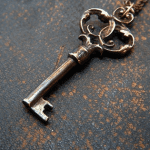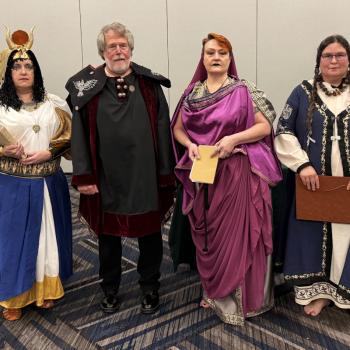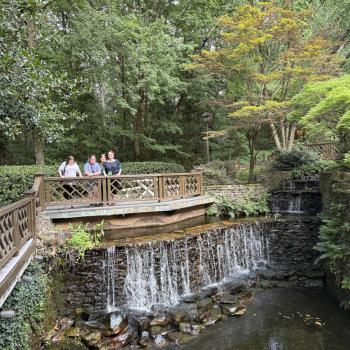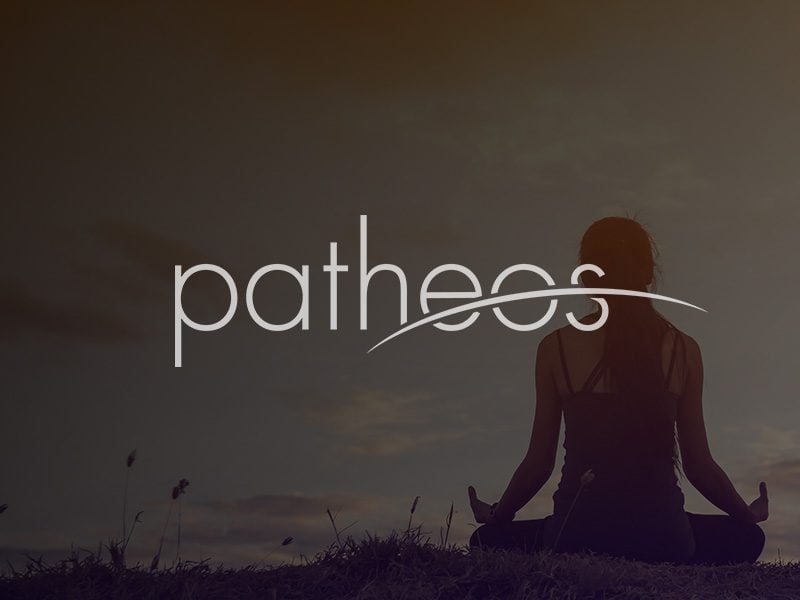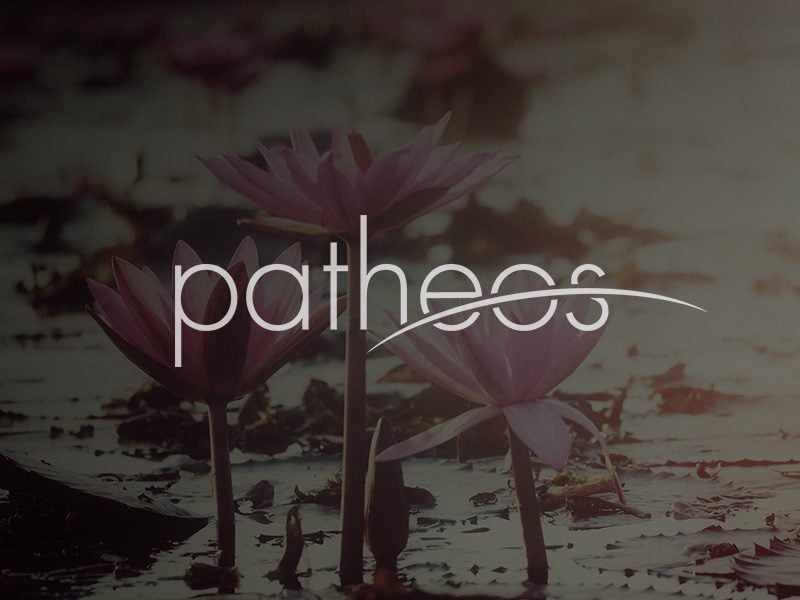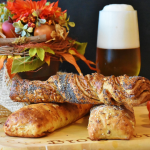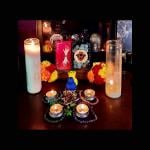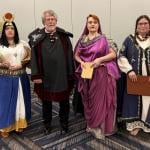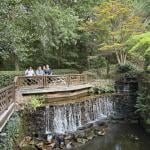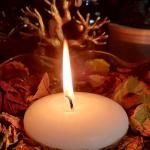[This begins the first chapter of my forthcoming A Tapestry of Witches: A History of the Craft in America, Vol. I. The book itself will have much prefatory material explaining how, why, and what I am covering. Here I am going to just jump right into the stories.]
Certainly there were people called Witches, or who called themselves Witches, in America before the arrival of Gardnerian Wicca in 1963. Sometimes the term meant merely people who practiced some sort of folk magic or had usable psychic gifts, and who thought of themselves as some sort of Christian, but there were others who considered their Witchcraft to be their religion, even though they rarely called it by that name. Data on their beliefs and practices have always been difficult to find. Gardnerian Witches play at secrecy. The old-style Witches really were secretive. I have some apparently reliable data on them only because some have very generously given it to me, wanting it to be published, or have made it public themselves, not wanting it to be lost.
Questions about whether that pre-Gardnerian Witchcraft was or was not the same religion as Gardnerian Wicca can only be answered by saying, “Well, it’s not that simple.” For one thing, the older Witches adopted the Gardnerian innovations with great enthusiasm, as you will see in several of the tales I have to tell. Why was that? Because Witches and Pagan in general do not assume that their beliefs, practices, etc., were engraved in stone by the Gods millennia ago and cannot be tampered with. There is no “deposit of faith,” no Holy Scriptures, no Magisterium, no unquestionable customs that must be maintained inviolate. Instead, good Witches, like good poets, will take anything that looks useful and make something new with it.
Introducing the Magus (Part I of III)
I met John Hansen in 1972 at Caerdderwen, the home of Alison Harlow, Gwydion Pendderwen, and Gwydion’s first wife, Cynthia, on McAndrews Avenue in Oakland, California. John traveled extensively on business in those days, which allowed him to serve as the “point man” for the Pagan Way movement, carrying news of it to other Witches around the country. That wasn’t simple. There were only about a hundred covens (maybe two hundred at most) in all of the US and Canada at that time, and not even Green Egg had reached them all. John was one of the triumvirate (the one called “Thomas Giles”) who had spearheaded creation of the Pagan Way (the other two were Ed Fitch, whom I met at Caerdderwen later that year, and Joe Wilson, whom I met there in 1973). Gwydion had been a member of the international “Committee of Correspondence” that had hammered out the plans for it, as was Susan Roberts.
Susan had contacted Joe about 1969 through his newsletter, The Waxing Moon, which he had founded in 1964 as the first Craft periodical in America. Susan was an astute journalist who knew that the Craft was going to become a big deal and wanted to write a serious and positive book about it (she did; it was Witches U.S.A.) Joe, who had amazing powers of discernment (sometimes), knew she could be trusted and put her in touch with the Witches she needed to interview. As a result, one evening, about a year later, Joe, Ed Fitch, Ray Buckland, and a few others were looking at Susan’s page proofs in New York and began to discuss the fact that the book would generate a tidal wave of inquiries about the Craft. It was decided that evening to begin creating what would come to be called the “Pagan Way,” as an interface, buffer, screening device, and public service that could make a non-secret form of Wicca available to far more people than Ray or the few other training covens at that time could possibly have dealt with. It was a catalytic decision. About 1970 dozens of new Craft and Pagan groups of various sorts sprang into existence. I will be telling all about that in future blogs. But for now . . .
John was charming that evening in Oakland, telling us about how his coven was recruiting and training new people. He said that a Witch in Los Angeles, Martha Adler—also a member of the Committee of Correspondence—had devised a system for finding new members: first, offering a class open to the public (of the kind now called Wicca 101), inviting suitable persons from that class to join a closed study group, then inviting some survivors of that group to accept initiation into the coven—after which the real training could begin. John said that the system worked quite well. However, one evening a young woman walked into the classroom and, John said, “Grandma said, ‘Take her and initiate her. NOW!’ So we did. One of the best members we’ve ever had.” A good Witch knows when to allow intuition to overrule the rules.
In the early 1990s, after Carl Weschcke had published my Crafting the Art of Magic, Vol.I: A History of Witchcraft in England, 1939-1964, I was supposed to, and was trying to, begin a Volume II, on the history of the Craft in America. It was actually far too early for such a history to be possible, but some friends did send me materials to use in such a book. Among them were Jim Baker, Joe Wilson, and John Hansen. John sent me several letters and essays, one being a short autobiography that was quite unusual; in fact, it delighted me. Instead of an improbable tale about being initiated by unnamed persons on a mountain in France at the new moon on Holy Saturday, he gives real names of real people, dates, and, most unusual of all, a detailed description of the ritual by which he was initiated—into the Tradition of the Magus Olney Richmond. He wrote me that he did not know who Richmond was even when he and his wife were founding their first coven, but he did track down the information later.
The foundation of the “Witchcraft Tradition” which I was initiated into occurred in the late 1800s . . . There was a person named Olney H. Richmond, who was a mystic and who lived in Chicago. In 1893, when the columbian Exposition of 1892-1893 was at its height [and when the first World Parliament of Religions took place], he published . . . the Mystic Test Book, about cartomancy, or card reading, using regular playing cards. He was the head of an organization that called itself the “Ancient Order of the Magi.” He was also a practitioner of magic and witchcraft, having been initiated into witchcraft, according to him, by his aunt. . . . he initiated a woman who was supposedly either his wife or daughter, whose name was Arlene Richmond, and who lived with him. Olney apparently died in the nineteen thirties [actually, in 1920], but Arlene died in the early nineteen fifties, having initiated a number of people, among them Donald Nelson, who operated an occult bookstore on North State Stret in Chicago [and who published several small occult books] and who introduced me to the whole subject.
Olney H. Richmond (1844-1920) did found the Order of the Magi in Chicago in 1889, one of the new astrological religions (like Thomas Burgoyne’s Brotherhood of Light and Hiram Butler’s Esoteric Fraternity) created in America in the nineteenth century. Richmond became a teacher to a group of about 30 men and women, and in 1889 opened a temple on South Division Street in Chicago. In 1890 a second temple was opened, in Lansing, Michigan. The Order still exists, but its website offers not even a hint that the current members know that the Order once had a witch coven as (what would now be called) its Inner Court.
Richmond wrote at least three books; the first that has been republished is his The Mystic Test Book (1893), in which he devised the system for using an ordinary deck of cards for psychic readings that is still in use today. On the title page, Richmond is identified as “Grand Master of the Inner Temple of the Ancient Order of the Magi.” That is, the organization was divided into an Inner Temple and an outer “court” of some sort, just as we might surmise from Hansen’s testimony. Second, rather than “Magus,” Richmond used the title “Grand Master,” which Victor Anderson told me was always the traditional title for the male leader of a coven.
On the “Dedication” page, Richmond writes, “To the friends of our secret order, within the sacred fold and without. . . . To the faithful ones in Temple or Court, faithful through fire, through water, through earth, through air, to the East, to the West, to the South and to the North, with all and through all.” This is very like the terminology now used to cast a circle, but the similarity may result from independent use of a common model (essentially Native American practices).
On the last page, a notice reads,
This Order is a true Secret Order in the fullest sense of the word. Its very cause of existence, its importance and its foundation principles are strictly secret and are obliged to be so from the very nature of things.
But the Religion of the Stars, which is the religion of the Order, is not secret. Its preachings and its practice is open to all who can appreciate it. The secret machinery of the Order is simply the vehicle by which the religion is taught and exploited in its various degrees according to the universal law of evolution. Those who would know more regarding this ancient order can obtain information at any time in the future by sending address and stamps to
MISS ARLENE L. RICHMOND
The Grand Temple is located at this date,
and here the page ends. Note that the Religion of the Stars was not part of the secrets of the Order, that the inner Temple dealt with very different matters. As we will seee, there is reason to believe that some of these inner secrets dealt with sex magick. Richmond’s Temple Lectures were on the exoteric practices of the Order, but close inspection of them may reveal hints about the inner workings as well.


